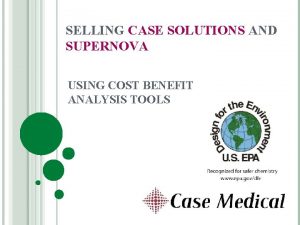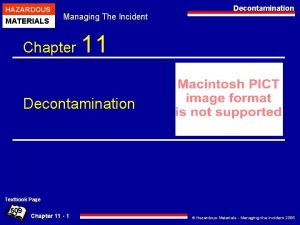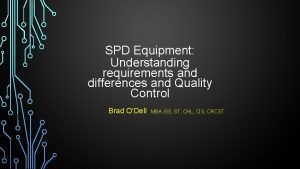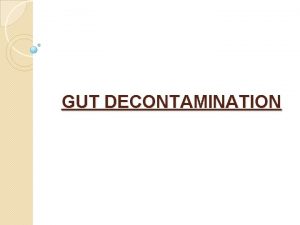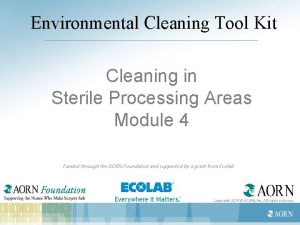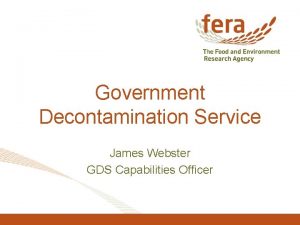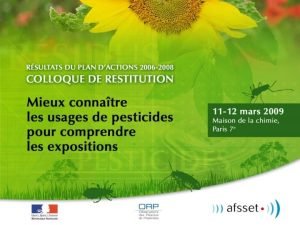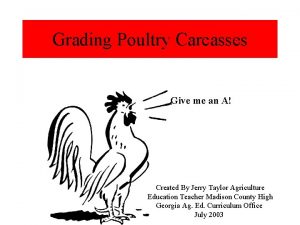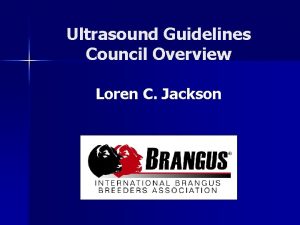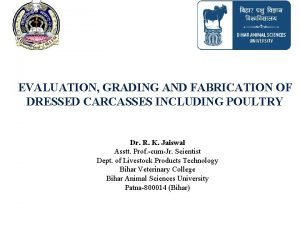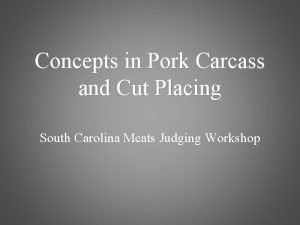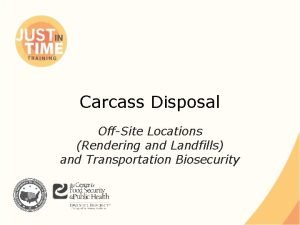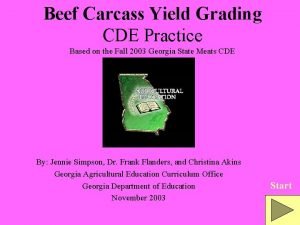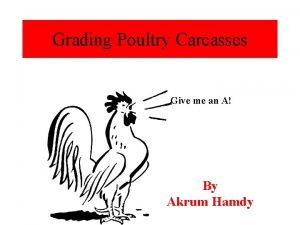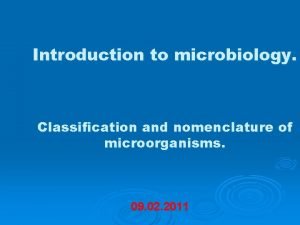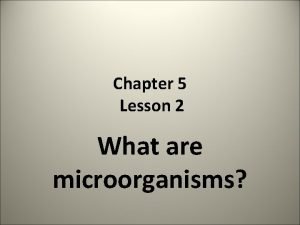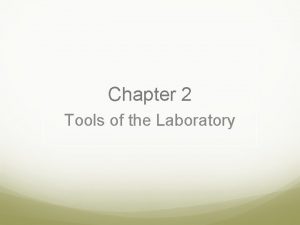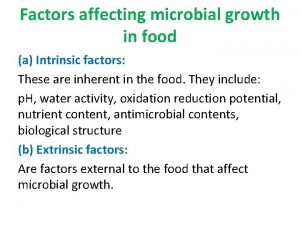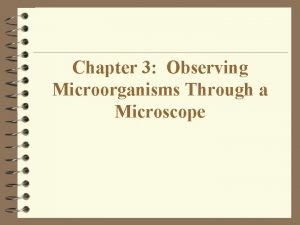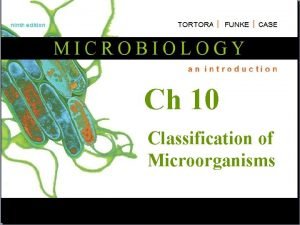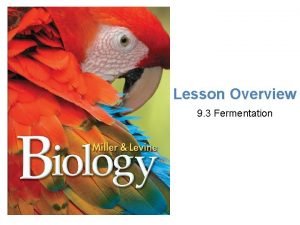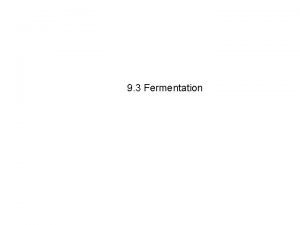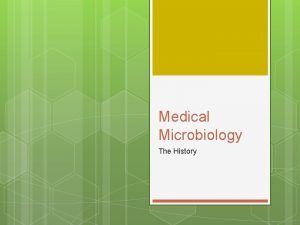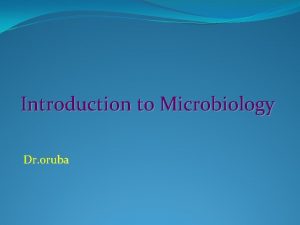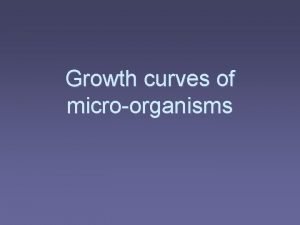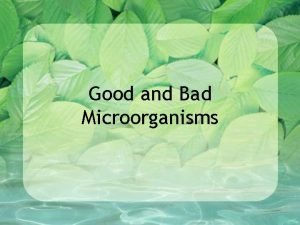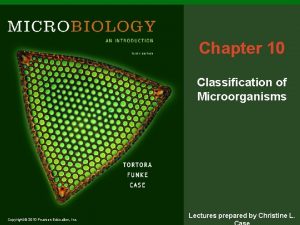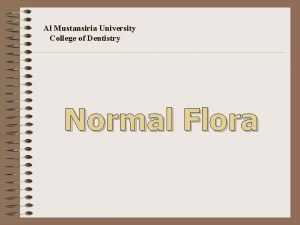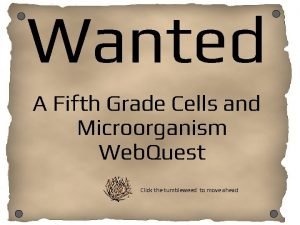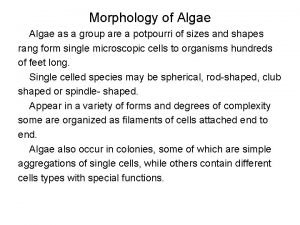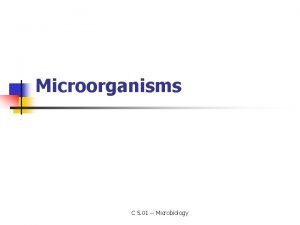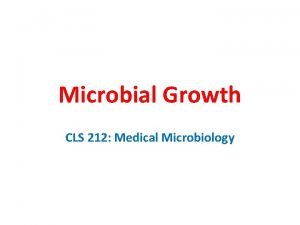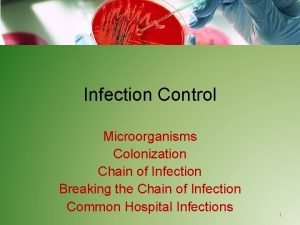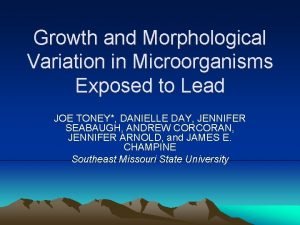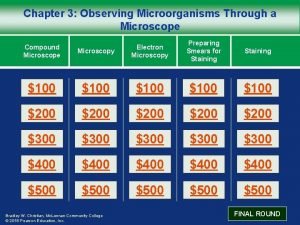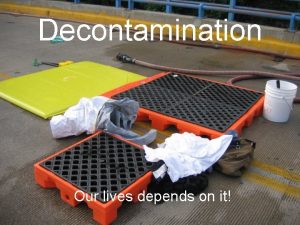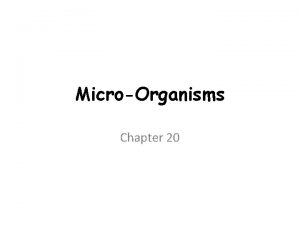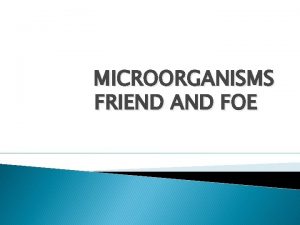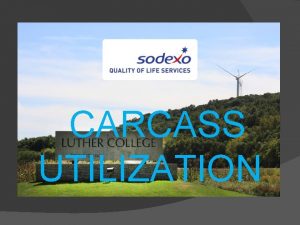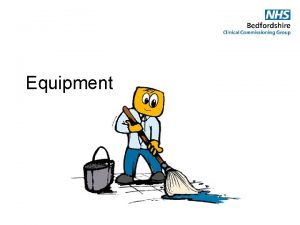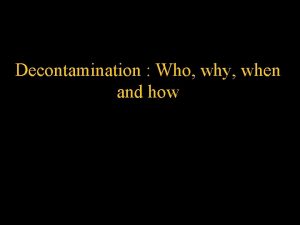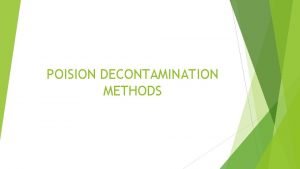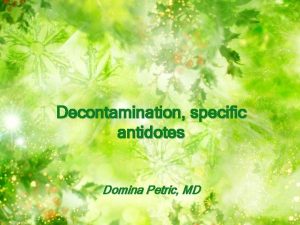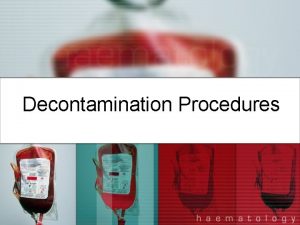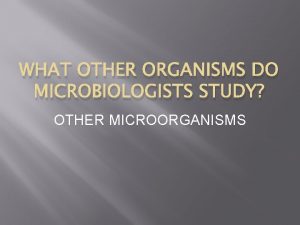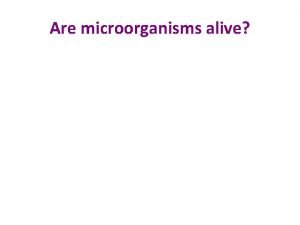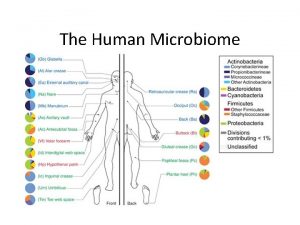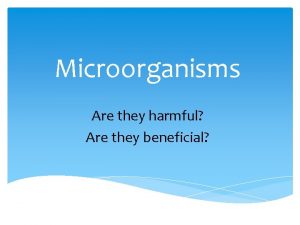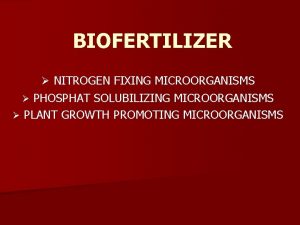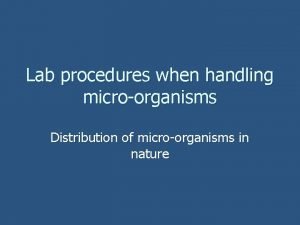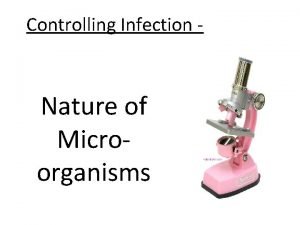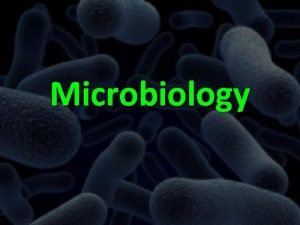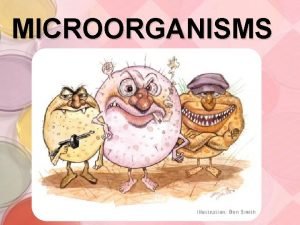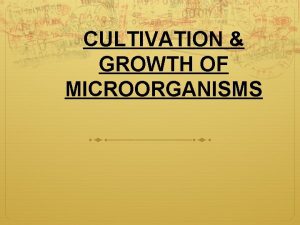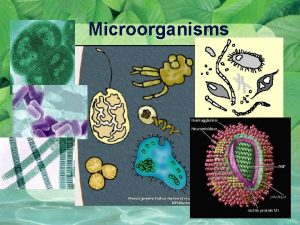CONTROL OF MICROORGANISMS OTHER TECHNOLOGIES FOR CARCASS DECONTAMINATION






































































- Slides: 70







CONTROL OF MICROORGANISMS




OTHER TECHNOLOGIES FOR CARCASS DECONTAMINATION Chlorine/Chlorine dioxide (20 -50 ppm) Trisodium phosphate (8 -12%) Ozone Acidified sodium chlorite Activated lactoferrin Peroxyacetic acid-based Cetylpyridinium chloride Acidified calcium sulfate Hydrogen peroxide *

OTHER TECHNOLOGIES FOR DECONTAMINATION Addtional chemical decontaminants: Sodium chloride Sodium hydroxide Nisin Potassium sorbate Sodium bisulfate Other decontamination processes: Ionizing radiation UV radiation Microwaves Pulsed light Electric fields Hydrostatic pressure Sonication







Selecting the range of environmental factors based on microbial responses Booth, (2002) Baranyi et al. (1996); Le Marc et al. (2005 Multiple Convex Polyhedron 1/12/2020 19 Παραδείγματα μοντέλων για την









Profile of effect of aw x temperature on growth rates of A. carbonarius on grape medium Magan 2006; Tassou et al. 2007 Παραδείγματα μοντέλων για την 1/12/2020 Applied Mycology Group ασφάλεια των τροφίμων 28

Optimum mean production of OTA by 8 strains of A. carbonarius (2 x Ita, Port, Isr, Gre) on grape medium (ug g-1) DSS Systems being developed 42 0. 00 40 38 0. 03 0. 05 0. 06 Temperature (o. C) 36 0. 08 34 32 0. 10 30 28 0. 11 26 0. 13 24 0. 15 22 20 0. 16 18 0. 18 16 0. 20 14 Magan 2006 1/12/2020 Applied Mycology Group 0. 930 0. 950 0. 980 Παραδείγματα μοντέλων για την ασφάλεια των τροφίμων Water activity 0. 987 29






TEMPERATURE Groups of microbes based on growth temperature (o. C): Psychrophiles Obligate psychrophiles Facultative psychrophiles Psychrotrophs Mesophiles Thermophiles Minimum Optimum Maximum -15 to +5 -15 to 0 -5 to +5 +5 to +15 +40 to +45 10 -30 10 -20 10 -30 20 -30 30 -40 55 -65 20 -40 20 -22 30 -40 40 -50 60 -90 For all groups: the lower the temperature the slower the growth Storage temperature selects organism to predominate


Combining spoilage and safety models 20 o. C Pseudomonads 15 o. C 12. 5 o. C 10 o. C Salmonella 1/12/2020 Παραδείγματα μοντέλων για την ασφάλεια των τροφίμων 37







WATER ACTIVITY Organisms growing at low aw are called: halophiles, xerophiles, osmophiles Halophiles: Mostly bacteria/unable to grow without salt/may require substantial amounts Xerophiles: Yeasts and molds; Grow most rapidly under dry conditions or at <0. 85 aw Osmophiles: Mostly sugar-tolerant yeasts; Grow in high osmotic pressure environments Important to know lowest aw allowing growth of a microorganism

WATER ACTIVITY Gram-negative bacteria: Pseudomonas Enterobacteriaceae Salt-tolerant Enterobacter Gram-positive: Lactobacillaceae Micrococcaceae Staphylococcus aureus enterotoxin 0. 93 Clostridium botulinum 0. 96 0. 93 0. 90 0. 94 0. 90 0. 86 -0. 83 0. 97 -0. 94 Halophilic/Xerophilic/Osmophilic: Grow only at reduced aw/fail to grow at high aw

Minimum aw for Growth of Microorganisms a w Pseudomonas 0. 98 Clostridium botulinum type E, Pseudomonas fluorescens 0. 97 Flavobacterium, Klebsiella, Proteus, Pseudomonas, Shigella, Lactobacillus 0. 96 Bacillus cereus, Clostridium perfringens, Escherichia coli, Lactobacillus viridescens, Salmonella, Serratia, Vibrio, Pseudomonas, Alcaligenes, Citrobacter, Enterobacter, Escherichia, Bacillus 0. 95

Minimum aw for Growth of Microorganisms a w Clostridium botulinum type A and B, Lactobacillus plantarum, Pediococcus cerevisiae, Enterobacter aerogenes, Vibrio parahaemolyticus, Microbacterium, Streptococcus 0. 94 Bacillus stearothermophilus, Micrococcus luteus, Lactobacillus, Streptococcus, Vibrio, Rhizopus, Mucor 0. 93 Rhodotorula, Pichia 0. 92 Corynebacterium, Staphylococcus/anaerobic Streptococcus 0. 91

Minimum aw for Growth of Microorganisms a w Bacillus subtilis, Micrococcus, Pediococcus, Saccharomyces, Hansenula 0. 90 Candida, Torulopsis, Cladosporium 0. 88 Debaryomyces 0. 87 Staphylococcus aureus/aerobic, Vibrio costicolus 0. 86 Penicillium 0. 85 Halobacterium halobium 0. 75 Aspergillus 0. 65

WATER ACTIVITY Many pathogens can survive for long periods, without growth, at low aw aw >0. 98: All pathogens grow rapidly; sometimes no detectable spoilage Concern for products processed to destroy competitors: cooking. . . holding warm aw of 0. 98 -0. 93: Most foodborne pathogens have their minimum within this range

WATER ACTIVITY Many pathogens can survive for long periods, without growth, at low aw aw of 0. 93 -0. 85: Only foodborne pathogen growing in this range is Staphylococcus aureus aw of 0. 85 -0. 60: Many mycotoxin-producing xerophilic molds No mycotoxin formation reported below 0. 80

WATER ACTIVITY aw >0. 98: Very moist; <3. 5% salt; 26% sucrose in aqueous phase Fresh meats/fish Fresh fruits/vegetables Milk/beverages Brined canned vegetables Canned fruits in light syrup

WATER ACTIVITY aw >0. 98: Protein foods (meat, fish): Aerobic/refrigerated: Pseudomonas. . putrid Anaerobic: Lactics. . . souring Fresh fruit/vegetables: Many bacteria (Erwinia carotovora) and fungi Low salt concentrations select for lactics Unconcentrated fruit juice: Wild yeast fermentations; low temperatures: Leuconostoc Low acid canned foods: Inadequate heat processing. . . Spore-forming bacteria: Acid, gas, putrefaction, sulfides

WATER ACTIVITY aw of 0. 98 -0. 93: Up to 10% salt or 50% sugar in aqueous phase Tomato paste Evaporated milk Canned cured meats Lightly salted pork/beef/fish Fermented/not dried sausages Cooked sausages Processed cheese/Gouda cheese Canned fruits in heavy syrup High moisture prunes Bread

WATER ACTIVITY aw of 0. 93 -0. 85: Foods with up to 17% salt or saturated sucrose Dried beef Dry/fermented sausage Raw ham Aged Cheddar cheese Sweetened condensed milk

WATER ACTIVITY aw of 0. 85 -0. 60: Jams and jellies: Predominance of xerophilic fungi and osmophilic yeasts Molds on surfaces exposed to air; yeasts deep inside. . . carbon dioxide production Heavily salted fish, exposed to air: Red halophilic bacteria may support growth of ‘dun’ mold Wallemia sebi. . . no flavor defects. aw lower than 0. 60: No growth

WATER ACTIVITY aw of 0. 85 -0. 60: Spoilage by xerophilic/osmophilic/halophilic Intermediate moisture foods Dried fruits Jams/jellies Molasses Cereals Flour Some aged cheeses Nuts Heavily salted fish Meat extract

WATER ACTIVITY aw < 0. 60: No growth; may remain viable Confectionary Chocolate Honey Noodles Biscuits Crackers Potato chips Dried eggs/milk/vegetables





ΑΠΑΙΤΗΣΕΙΣ ΣΕ Ο 2 Δυναμικό οξειδοαναγωγής Aerobes: favored by + Eh (oxidized); +350 to +500 m. V; Bacillus, most yeasts and molds Anaerobes: favored by - Eh (reduced); <-150 Mv; Clostridium botulinum Facultative anaerobes: +100 to +350 m. V; Lactics Aerotolerant: -125 to +287 m. V; Clostridium perfringens Microaerophilic: need about 5% oxygen; Campylobacter Plant products: more –m. V Meat products: more +m. V








Παράγοντες-Χειρισμοί στους οποίους οφείλονται οι τροφοδηλητηριάσεις Rank 1 2 3 4 5 6 7 8 9 10 11 12 Contributing Factor Contaminated raw food/ingredient Inadequate cooking/canning/heat processing Obtained food from unsafe source Improper cooling Lapse of >12 hrs between preparing & eating Colonized person handling implicate food Mistaken for food Improper fermentations Inadequate reheating Toxic containers Improper hot holding Cross-contamination *% exceeds 100 because multiple factors contribute to single outbreaks SOURCE: from Bryan (1988) %* 42. 0 31. 3 28. 7 22. 3 12. 8 9. 9 7. 0 4. 6 3. 5 3. 2
 Steris decontamination sinks
Steris decontamination sinks Contamination vs cross contamination
Contamination vs cross contamination High impingement washer
High impingement washer Gut decontamination
Gut decontamination Sterile processing decontamination ppe
Sterile processing decontamination ppe Government decontamination service
Government decontamination service Sphair decontamination
Sphair decontamination Poultry carcass grading practice
Poultry carcass grading practice Ultrasound guidelines council
Ultrasound guidelines council Pork carcass grading
Pork carcass grading Pork carcass grading
Pork carcass grading Rendering carcass
Rendering carcass Break joint vs spool joint
Break joint vs spool joint Beef carcass yield calculator
Beef carcass yield calculator The lowest or worst grade for poultry carcasses
The lowest or worst grade for poultry carcasses Learning objectives of microorganisms
Learning objectives of microorganisms Importance of microbes
Importance of microbes Harmful microorganisms
Harmful microorganisms Harmful microorganisms
Harmful microorganisms The five i's of studying microorganisms
The five i's of studying microorganisms Flora fauna and microorganisms
Flora fauna and microorganisms Factors affecting bacteria growth
Factors affecting bacteria growth Observing microorganisms through a microscope
Observing microorganisms through a microscope Microorganisms meaning
Microorganisms meaning Microorganisms 5th grade
Microorganisms 5th grade Organism of lactic acid fermentation
Organism of lactic acid fermentation Fermentation in microorganisms
Fermentation in microorganisms Microorganism wanted poster
Microorganism wanted poster What is microbiology
What is microbiology Classification of microorganisms
Classification of microorganisms Microorganisms
Microorganisms What is the microorganisms
What is the microorganisms Physiology of microorganisms
Physiology of microorganisms Classification of microorganisms
Classification of microorganisms Flora
Flora Wanted posters microorganisms
Wanted posters microorganisms Morphology of algae
Morphology of algae Major groups of microorganisms
Major groups of microorganisms Biogas microorganisms
Biogas microorganisms Factors affecting microbial growth in food
Factors affecting microbial growth in food Handwashing steps
Handwashing steps Microorganisms species
Microorganisms species Observing microorganisms through a microscope
Observing microorganisms through a microscope Types of positions
Types of positions Kontinuitetshantering i praktiken
Kontinuitetshantering i praktiken Novell typiska drag
Novell typiska drag Nationell inriktning för artificiell intelligens
Nationell inriktning för artificiell intelligens Vad står k.r.å.k.a.n för
Vad står k.r.å.k.a.n för Shingelfrisyren
Shingelfrisyren En lathund för arbete med kontinuitetshantering
En lathund för arbete med kontinuitetshantering Adressändring ideell förening
Adressändring ideell förening Tidbok
Tidbok Anatomi organ reproduksi
Anatomi organ reproduksi Vad är densitet
Vad är densitet Datorkunskap för nybörjare
Datorkunskap för nybörjare Boverket ka
Boverket ka Debatt mall
Debatt mall Autokratiskt ledarskap
Autokratiskt ledarskap Nyckelkompetenser för livslångt lärande
Nyckelkompetenser för livslångt lärande Påbyggnader för flakfordon
Påbyggnader för flakfordon Formel för lufttryck
Formel för lufttryck Offentlig förvaltning
Offentlig förvaltning Jag har nigit för nymånens skära text
Jag har nigit för nymånens skära text Presentera för publik crossboss
Presentera för publik crossboss Vad är ett minoritetsspråk
Vad är ett minoritetsspråk Kanaans land
Kanaans land Treserva lathund
Treserva lathund Fimbrietratt
Fimbrietratt Claes martinsson
Claes martinsson Cks
Cks Programskede byggprocessen
Programskede byggprocessen
